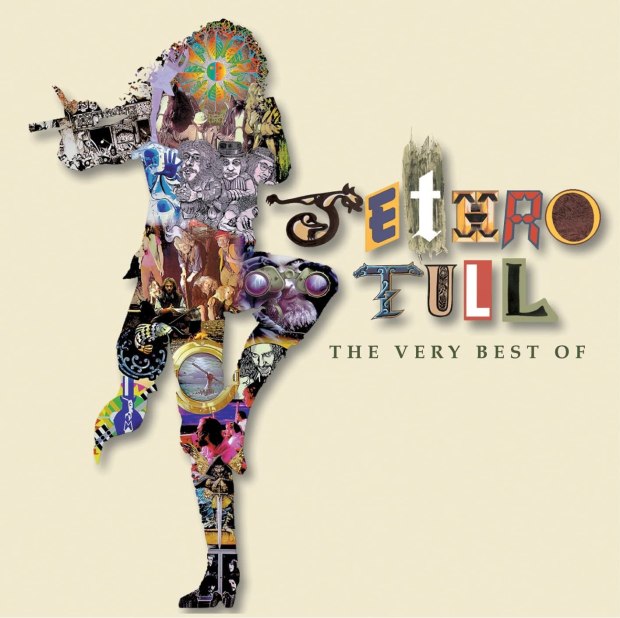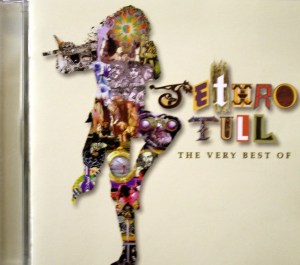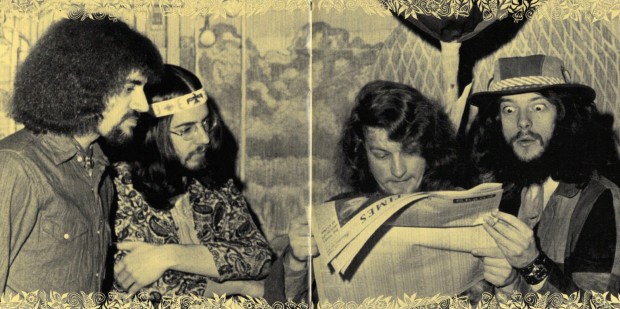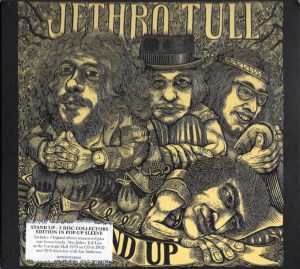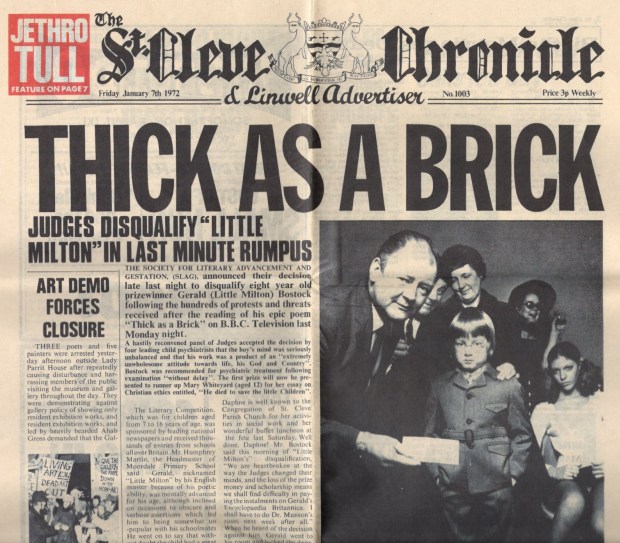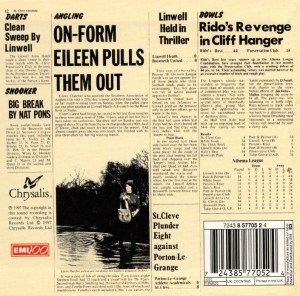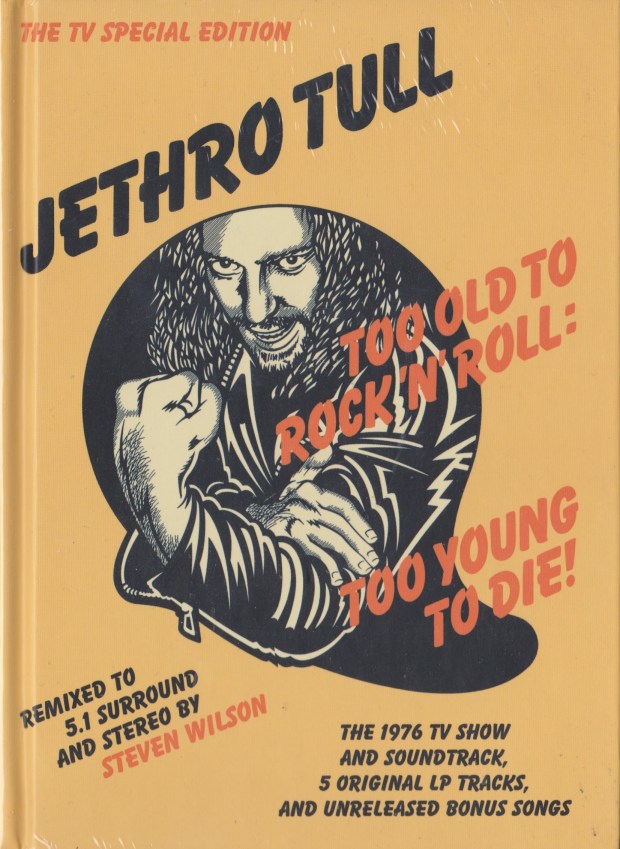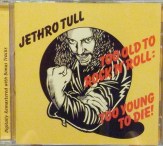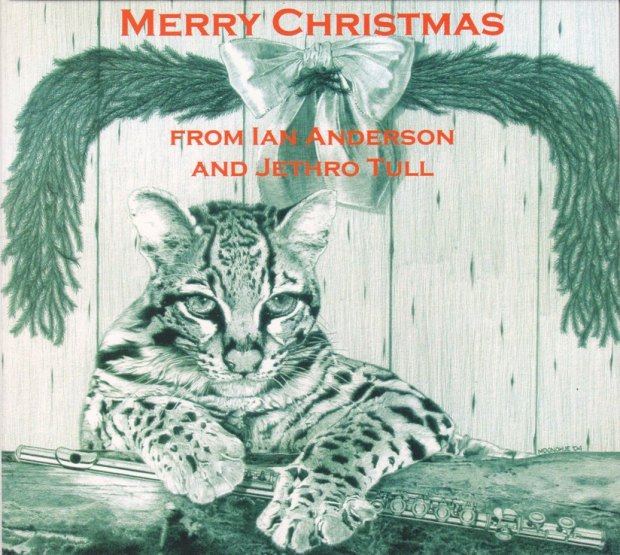Thanks to Aaron of the KMA for sending this record for my 50th birthday! 50th anniversary edition for my 50th trip around the sun.
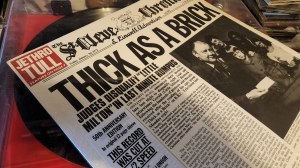 JETHRO TULL – Thick As A Brick (Originally 1972, 50th Anniversary Chrysalis Steven Wilson remix, cut 1/2 speed vinyl edition)
JETHRO TULL – Thick As A Brick (Originally 1972, 50th Anniversary Chrysalis Steven Wilson remix, cut 1/2 speed vinyl edition)
This review is focused on the remix and packaging of the 50th anniversary edition. For a more music-focused analysis, read our 25th Anniversary CD review. That CD came out in 1997. How does that make you feel? Here we are on the 50th anniversary of this great album already.
Even those who dislike remixes often approve of those done by Steven Wilson. In 2012, for Thick As A Brick‘s 40th anniversary, Wilson created new stereo and 5.1 mixes for the album. Such remixes work best when you play the album and can’t quite tell exactly what has changed. Such is the case for Thick As A Brick. The bass sounds deeper and the album sounds bigger. You may notice musical elements you didn’t pick up on before, but the remix was clearly done with respect and never deviates too far from what you know.
The 5.1 remix is scheduled for a reissue in the fall, as even the 40th anniversary edition will get a reprint after nearly a decade out of print.
This vinyl LP was cut at 1/2 speed at AIR Studios. According to the front sticker, this was performed on “a fully customized Neumann VMS80 lathe with fully recapped electronics”. According to the same sticker, the 1/2 speed cutting allows better recreation of high frequencies. I probably can’t hear them anyway, but in short: the record sounds amazing! The nuances of the flute, the organ, the acoustics…all here. All thick as a brick! Punchy. More three-dimensional. Because everything is so clear and in your face, this is my preferred way to listen to Thick As A Brick. There is no struggling to hear any of the parts. It’s all there, with good separation too.
For this reissue, the newspaper packaging has been reproduced full size. The actual sleeve of the album is a 12 page newspaper. This was, of course, discontinued for most reissues over the past decades. Like a real newspaper, this packaging include crosswords and advertisements, all fake and meticulously assembled to entertain and baffle those who stumbled upon it. The outer page, which becomes the front cover, is of harder paper stock than the inner pages. There have been complaints of bent and damaged pages inside the shrink wrap, but this copy was perfect upon opening.
In case you need to be told, Thick As A Brick is one song, split over two sides of vinyl. “Thick As A Brick” sides one and two; there’s your complete tracklisting! It must be said that though side two tends to get less appreciation, the last 10 minutes are pure progressive rock delight. The album just gallops on side two.
Get your newspaper and a coffee, and sit down to enjoy the Steven Wilson remix of Thick As A Brick. It’s a lovely way to spend your day.
5/5 stars








